To ensure a successful dental implant healing process and minimize complications such as implant failure and infection, it is crucial to follow post-operative instructions carefully. This article provides a detailed guide for each stage of the healing process, helping you manage discomfort and achieve optimal results.
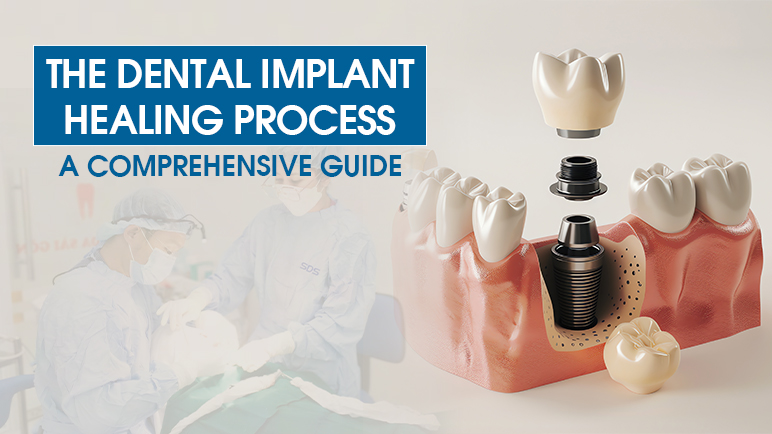
Dental implant preparation and healing: A step-by-step guide
The dental implant procedure is multifaceted, consisting of several stages aimed at ensuring a secure, lasting implant. Each step is meticulously designed to create a strong foundation for the replacement teeth.
Extracting the Damaged Tooth
Before the actual implantation can take place, the first step—if necessary—is the extraction of the damaged or missing tooth. This often occurs under local anesthesia to ensure patient comfort.
The extraction process requires the dentist to carefully remove the tooth from its socket without damaging surrounding tissues. If the tooth is severely decayed or infected, it is essential to clean and disinfect the area thoroughly to minimize the risk of complications during the implant procedure. Post-extraction, the body begins its natural healing process, which lays the groundwork for the subsequent stages of the tooth implant recovery.
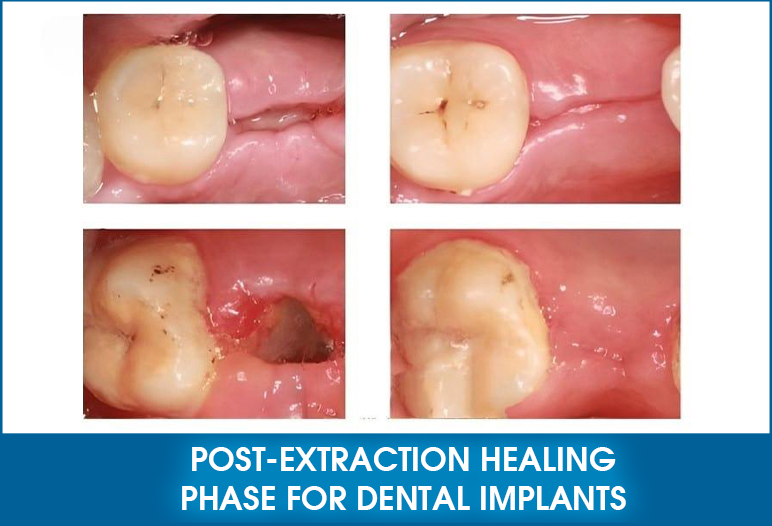
The emotional ramifications of losing a tooth can be significant, as people may feel self-conscious or embarrassed about their appearance. Thus, having a plan in place for immediate restoration options provides reassurance and helps alleviate anxiety.
Preparing the Jawbone for Implant Placement
Once the damaged tooth has been extracted, the next phase involves assessing the jawbone’s health. It must be robust and healthy enough to support the artificial tooth root. In instances where bone loss occurs due to prior tooth extraction or other factors, a bone grafting procedure might be warranted.
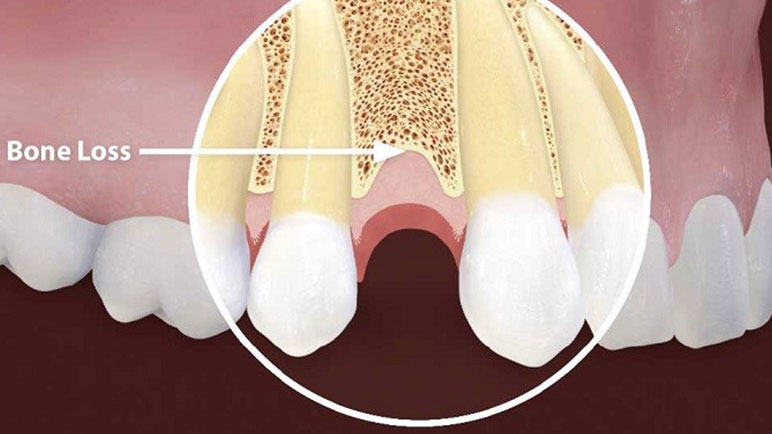
Bone grafting involves adding tissue to enhance the density and stability of the jawbone, either sourced from the patient’s own body or from a donor. This preparatory step is crucial for successful osseointegration—the process where the implant fuses with the bone.
For many patients, this stage can feel daunting, as it introduces additional procedures. Choosing an experienced dental professional who can effectively perform these preparations can substantially influence both the healing process and the eventual outcome of the dental implant surgery recovery.
Placing the Dental Implant
Once the jawbone is deemed suitable, the dentist surgically places the dental implant. Usually crafted from titanium, this small screw serves as the new tooth root.
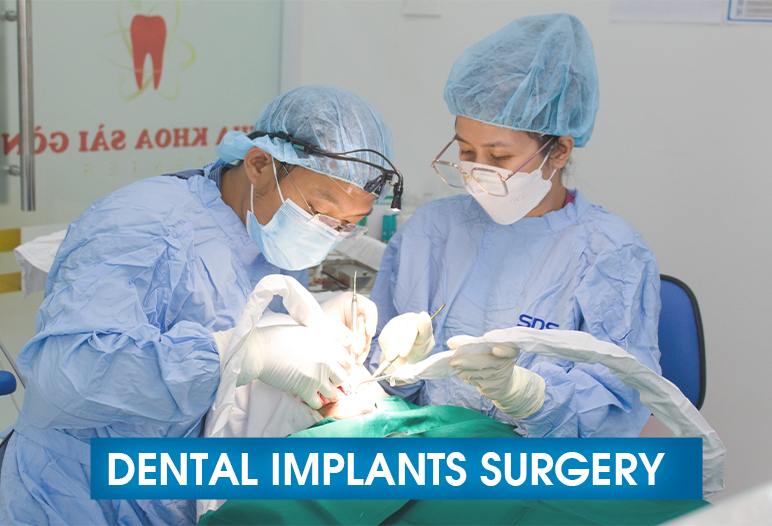
During this surgery, the dentist carefully assesses the positioning and stability of the implant before closing the gums around it. Afterward, the implant remains in place for several months, allowing time for the critical osseointegration phase.
Understanding that this is a multi-step process can ease some anxiety. The journey does not end at the placement; rather, it marks the beginning of a healing period vital for the longevity and functionality of the new implant.
![]() Refer to our dental implant costs and related treatments. Get a free consultation from our Dentists.
Refer to our dental implant costs and related treatments. Get a free consultation from our Dentists.
| SINGLE-TOOTH IMPLANTS | DENTAL COST (USD) | DISCOUNT PRICE (USD) |
| Premium Korean implant (Dentium) | 800 | 720 |
| US implant (Dentium) | 960 | 880 |
| Italian implant (C-Tech) | 1,000 | 920 |
| US implant (Superline) | 1,080 | 1,000 |
| France/Switzerland (Kontact / Neodent) | 1,240 | 1,080 |
| Super Active (Nobel/Straumann) | 1,600 | 1,440 |
| Titanium-porcelain restoration | 160 | |
| Full Zirconia CAD/CAM Crown on Implant | 280 | |
| FULL 1 JAW IMPLANTS | DENTAL IMPLANTS COST (USD) | DISCOUNT PRICE (USD) |
| Implant ALL ON 4 Dentium (Korea) (Include screw only + Temporary strengthened crown) | 6,000 | 4,000 |
| Implant ALL ON 4 Straumann Neodent (Swiss) (Include screw only + Temporary strengthened crown) | 7,000 | 5,200 |
| Implant ALL ON 4 Nobel / Straumann SLA Active (Include screw only + Temporary strengthened crown) | 9,000 | 7,200 |
| Implant ALL ON 6 Dentium (Korea) (Include screw only + Temporary strengthened crown) | 8,000 | 5,600 |
| Implant ALL ON 6 Straumann Neodent (Swiss) (Include screw only + Temporary strengthened crown) | 9,000 | 7,600 |
| Implant ALL ON 6 Nobel / Straumann SLA Active (Include screw only + Temporary strengthened crown) | 12,000 | 10,400 |
| Zygomatic Implants – “All on 4”, full arch, fixed bridge | 13,000 | |
| Final bar + High Acrylic Permanent teeth (4–6 Months Later) | 1,400 | |
| Final bar + Full Zirconia CAD/CAM teeth (4–6 Months Later) | 4,000 | |
|
For patients deciding on Implants All-On treatment SAIGON IMPLANT CENTER will give customers a gift package, including: |
|
|
The Dental Implant Healing Process
The recovery time for dental implants varies for each person, but the process generally involves multiple steps, from the body’s initial response to full integration with the jawbone. Proper care and following your dentist’s instructions are crucial for a smooth tooth implant recovery. With the right precautions, you’ll enjoy a successful outcome from your implant surgery recovery.
The dental implant healing process happens in several stages. Let’s take a look at what to expect during your tooth implant recovery time.
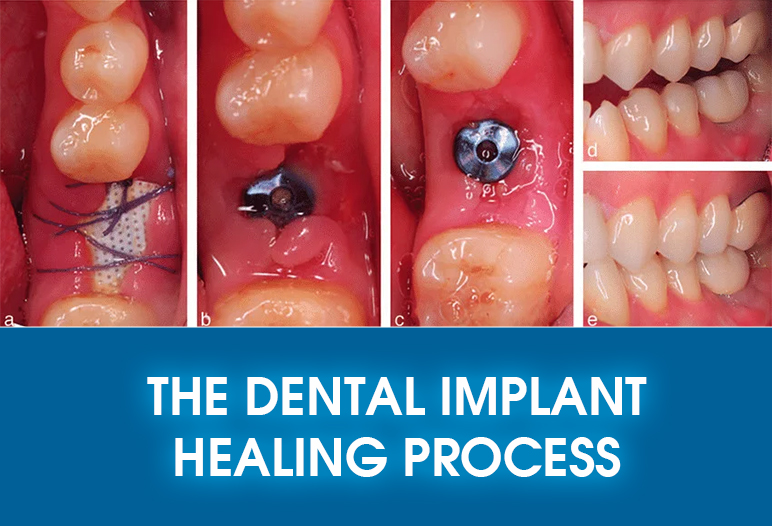
Dental implant healing time: Initial Stage (0-48 hours after implant placement)
Natural Body Response: After your dental implant surgery, the body initiates a mild inflammation response to begin the tooth implant healing process. You may feel some minor discomfort, swelling, or tenderness at the implant site.
Clot Formation: Blood clots will form around the implant to stop bleeding and protect the area.
Symptoms: Swelling and pain may be present, but this will start to subside after 1-2 days as you begin recovering from dental implants.
Tissue Regeneration Stage (48 hours – 2 weeks after surgery)
Recovering from implant surgery tissue Regeneration: During this stage of dental implant healing, new cells begin to regenerate soft tissue around the implant, while new blood vessels form to nourish the healing area.
Symptoms: Pain and swelling should continue to decrease, and the soft tissue around the implant will begin to recover, speeding up the dental implant surgery recovery.
Bone Integration Stage (2 weeks – 6 months after implant placement)
Osseointegration (Bone Fusion): This is the critical stage where new bone grows around the implant, anchoring it securely into your jawbone. This part of the implant healing process is essential for the long-term success of the implant.
Symptoms: By now, you should experience minimal to no pain, and the implant area becomes much more stable, marking steady progress in the implant recovery timeline.
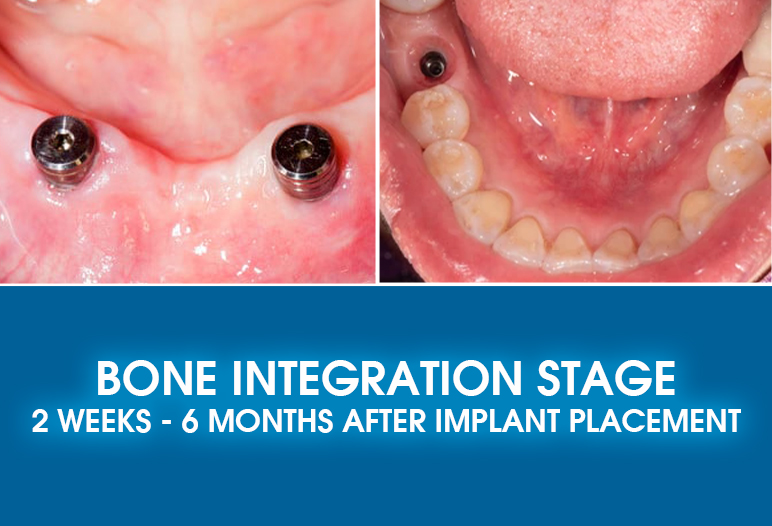
Final Stage (6 months and beyond)
Complete Bone Fusion: The surrounding bone continues to rebuild and strengthen, allowing the implant to withstand regular chewing forces. This stage completes the dental implant recovery timeline.
Attaching the Crown: Once the implant healing time is complete, your dentist will attach the crown or restoration to the implant. At this point, your implant is fully functional, and you can eat and chew normally.
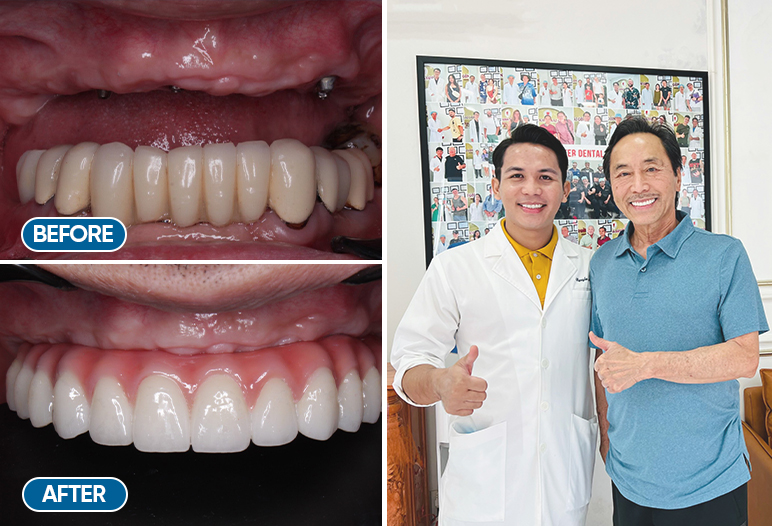
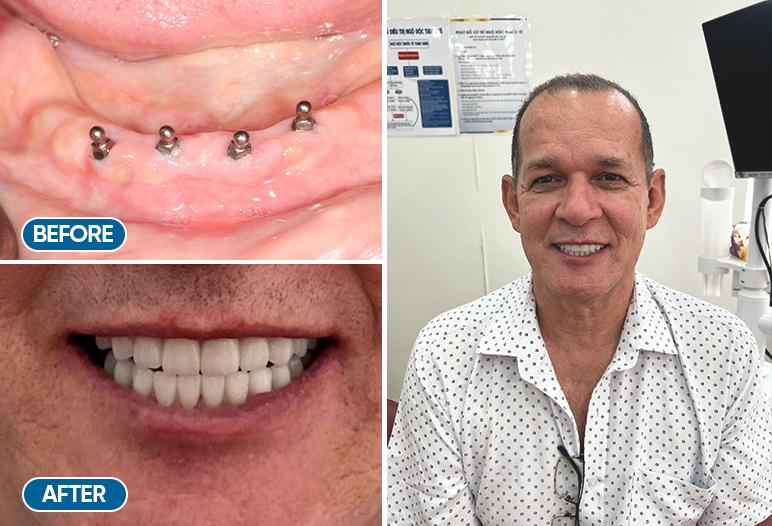

The Initial Healing Phase: Osseointegration
Osseointegration is often regarded as the cornerstone of successful dental implant treatment. It’s imperative to understand this phase as it dictates the long-term success of the implant.
What is Osseointegration?
Osseointegration refers to the biological process whereby the titanium implant integrates with the surrounding jawbone. Through the body’s natural healing response, bone cells gradually grow around the implant, anchoring it securely in place.
This intricate biological interaction is facilitated by osteoblasts, which are specialized cells responsible for bone formation. They play a pivotal role in ensuring that the implant becomes a stable and permanent part of the mouth’s anatomy.
Patients might find solace in knowing that the body has evolved mechanisms for healing and adapting. The success of osseointegration ultimately provides the foundation for the durability of the new tooth, enhancing both functionality and aesthetics.
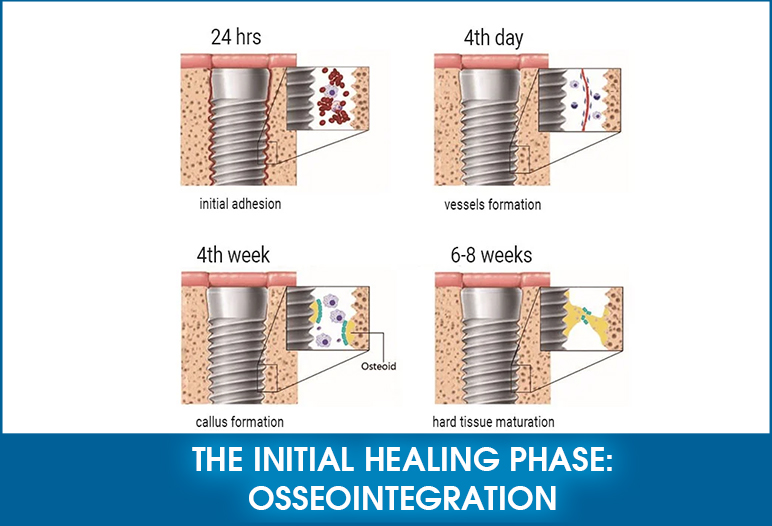
The Role of Bone Growth Factors
Bone growth factors are proteins that significantly contribute to the osseointegration process. These factors stimulate bone cell activity and promote the formation of new bone around the implant, accelerating the healing journey.
Research has shown that utilizing bone growth factors can enhance the incorporation of implants into the jaw. For patients seeking ways to improve their outcomes, discussing the potential use of these factors with their dentists may open new avenues for recovery.
Furthermore, being aware of individual health conditions can provide insight into how quickly one might expect the implant healing time to progress. For instance, certain systemic health issues may slow down the healing process, necessitating a tailored approach to each patient’s unique circumstances.
Maintaining Oral Hygiene During this Stage
One of the most critical aspects of the osseointegration phase is maintaining excellent oral hygiene. Gently brushing and flossing around the implant site as directed by the dentist helps prevent infection and promotes healing.
Individuals should exercise caution not to disrupt the delicate healing area by using harsh cleaning tools or excessive pressure. A soft-bristled toothbrush combined with gentle flossing techniques can effectively safeguard the fragile environment of the newly implanted site.
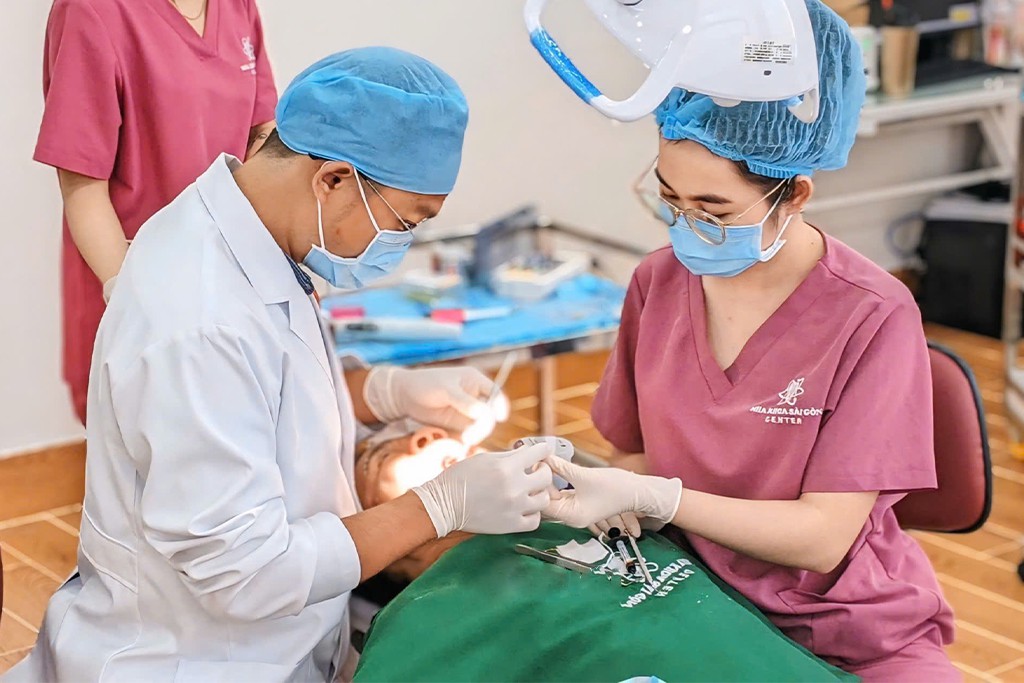
Additionally, regular follow-ups with the dental team are essential during this stage. Consistent communication helps ensure that any potential issues are identified and addressed promptly. Ultimately, prioritizing oral hygiene sends a clear message: you are committed to the success of your tooth implant recovery.
Post-implant healing: Care and maintenance guidelines
Experiencing pain and swelling post-surgery is common, but it is manageable if approached correctly. Understanding how to best navigate these symptoms is vital for a smooth recovery.
Post-Surgical Instructions
Upon completion of the dental implant surgery, specific post-operative instructions will be provided by your dentist to assist in managing discomfort. These directives typically include applying ice packs or cold compresses to the affected area to reduce swelling and alleviate pain.
Moreover, your dentist may prescribe medications such as pain relievers or antibiotics to help control discomfort and ward off potential infections. Following these instructions diligently can significantly enhance your overall recovery experience.
It is equally important to avoid strenuous activities, particularly those that elevate blood pressure. Such activities can exacerbate swelling and increase the likelihood of bleeding around the surgical site.
Over-the-Counter Pain Relief Options
In addition to prescribed medications, over-the-counter options, such as ibuprofen or acetaminophen, can address mild to moderate pain. However, it is crucial to adhere to your dentist’s guidance regarding medication combinations, as some may interfere with healing.
Engaging in light activities like walking can promote circulation without straining the body. This balance between rest and gentle movement can foster an optimal environment for recovery from dental implants.
When to Seek Emergency Dental Care
While some discomfort is expected, it is essential to recognize signs indicating a potentially serious issue. Patients should contact their dentist or seek emergency care if they encounter severe or persistent pain that doesn’t subside with medication or experience excessive bleeding that persists despite consistent pressure.
Other red flags include fever or chills, which could indicate an underlying infection, rapid swelling extending beyond the immediate surgical site, and difficulty breathing or swallowing, signaling a possible complication requiring urgent attention.
Promptly addressing these concerns ensures that complications can be managed effectively, allowing the healing process to stay on course.
Rooth Implant Recovery Tips: Soft Food Diet Recommendations
During the initial healing period, adopting a soft food diet is crucial for minimizing stress on the implant site. Foods like nutrient-rich soups and broths provide hydration and nourishment without taxing the healing tissues.
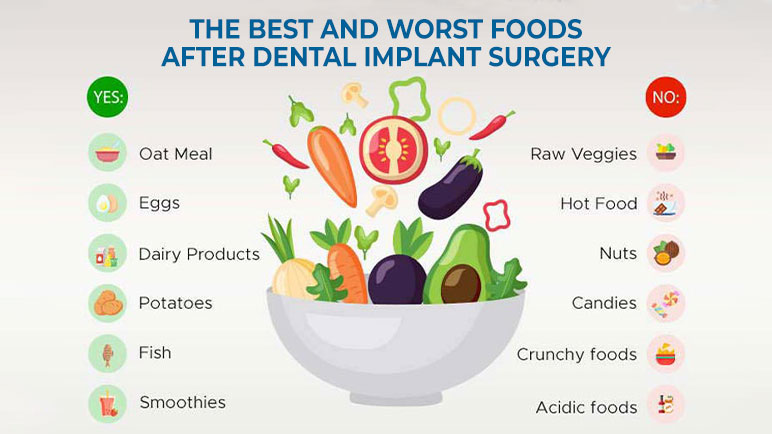
Smoothies and yogurt offer a convenient way to consume vitamins, minerals, and protein in a digestible form. Mashed potatoes, pureed vegetables, scrambled eggs, and cooked fish can deliver essential nutrients while remaining gentle on the surgical area.
Such dietary choices not only facilitate physical healing but also promote mental well-being. Eating wholesome foods can elevate mood and provide energy, making the recovery journey more enjoyable.
Foods to Avoid During Initial Healing
Equally important is recognizing foods to avoid during this initial healing phase. Hard, crunchy, or chewy foods—like nuts, popcorn, and hard candies—carry the risk of damaging the implant or irritating the surgical site.
Sticky or gummy foods may lodge in the implant area, increasing the risk of infection. Also, any food requiring excessive chewing should be avoided during this sensitive period to prevent undue strain on the implant.
Lastly, it is wise to steer clear of extremely hot or cold foods, as temperature extremes can irritate the surgical site and hinder healing. By avoiding these pitfalls, patients set themselves up for a smoother recovery experience.
Maintaining Hydration
Staying hydrated is a crucial aspect of the recovery process. Drinking ample water helps keep the mouth moist, supports wound healing, and flushes out bacteria that may compromise the surgical site.
It’s advisable to avoid using straws, as the suction can disrupt healing and create negative pressure around the implant. Making hydration a priority ensures that the body has the resources it needs to heal effectively, thus shortening the overall recovery time for dental implants.
How can dental implants be cared for for long-term success?
Once the healing process is complete, sustaining the health and longevity of your dental implant requires consistent care and attention.
Regular Check-ups and Cleanings
Regular check-ups and professional cleanings are essential for monitoring the status of the teeth implant recovery time or implant and surrounding tissues. These appointments typically occur every six months to a year, helping to identify early signs of potential issues before they escalate.
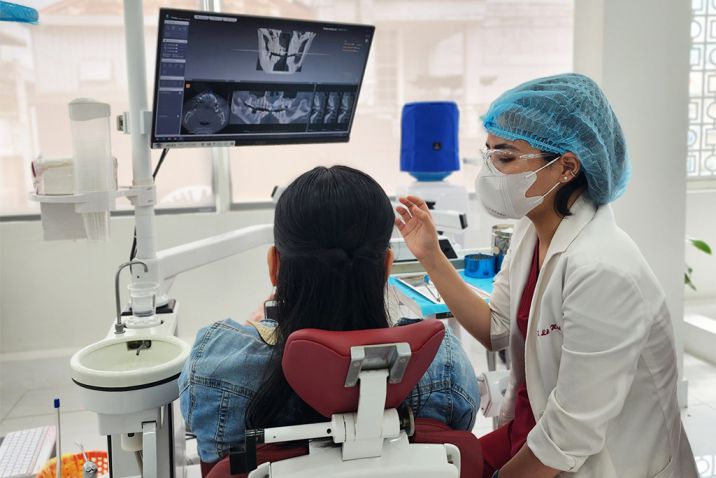
During these visits, your dentist will assess the health of the implant, ensuring that it remains free from infection or disease. Staying vigilant about these appointments demonstrates a commitment to oral health, boosting both the longevity of the implant and overall wellness.
Proper Oral Hygiene
Effective oral hygiene practices are paramount for preserving the health of your dental implant. Brushing twice daily with a soft-bristled toothbrush and fluoride toothpaste helps keep plaque and bacteria at bay.
Flossing once a day is equally important for removing food particles and preventing plaque buildup around the implant. Additionally, incorporating an interdental brush can aid in cleaning hard-to-reach areas, ensuring that no debris compromises the integrity of the implant.
Rinsing with an antibacterial mouthwash further complements these practices, reducing harmful bacteria and keeping the mouth clean.
Avoiding Harmful Habits
Certain habits can adversely impact the health and longevity of your dental implant. Smoking is known to significantly increase the risk of implant failure by restricting blood flow to the implant site and impeding the healing process.
Grinding or clenching teeth is another detrimental habit that can put excessive pressure on the implant and surrounding bone, leading to premature loosening or failure. Educating oneself about these harmful behaviors is essential for safeguarding the investment made in dental implants.
Avoiding biting on hard objects, such as pens or fingernails, is also essential. These actions can damage the implant or surrounding teeth and gum tissues, leading to complications that might jeopardize the success of your treatment.
Conclusion Dental implant how long to heal
Navigating the dental implant healing process is undoubtedly a journey filled with various stages, each contributing to the ultimate success of the implant. Understanding the intricacies of this process—from the initial extraction of the damaged tooth to managing post-surgical pain and cultivating proper hygiene—empowers patients to take control of their healing journey.
By following the advice and recommendations outlined in this comprehensive guide, individuals can enhance their recovery experience, promote osseointegration, and enjoy the long-term benefits of restored function and aesthetics. Your commitment to careful maintenance, nutritious eating, and routine dental visits ensures that your investment in a dental implant pays dividends for years to come. Embrace the journey, and know that your smile is worth every step taken along the way.
We hope that the information about tooth implant surgery recovery has provided you with valuable insights. Please don’t hesitate to contact Saigon Dental Implants Center in Vietnam for further assistance.
SAIGON IMPLANT CENTER – Dental Implant Specialist Vietnam
- Head Clinic: 119 Yersin, Pham Ngu Lao Ward, District 1, Ho Chi Minh City, Vietnam
- Branch Clinic: 378B Vo Van Tan, Ward 5, District 3, Ho Chi Minh City, Vietnam
- Hotline: (+84) 973 199 986
- Email: saigoncenterdental@gmail.com
- Website: saigonimplant.com
- Working Time: Mon – Sat: 08:00 – 18:00 | Sun: 08:00 – 16:00

 Google Reviews
Google Reviews Call
Call
SAIGON IMPLANT CENTER
Best dentist in Vietnam
Saigon Implant Center - Dental Clinic utilizes the latest technology for specialized treatment in the field of Single implant, full jaw implants, All on 4 implants, All on 6 implants, Zygoma implant....
SAIGON IMPLANT CENTER
Best dentist in Vietnam
Saigon Implant Center - Dental Clinic utilizes the latest technology for specialized treatment in the field of Single implant, full jaw implants, All on 4 implants, All on 6 implants, Zygoma implant....